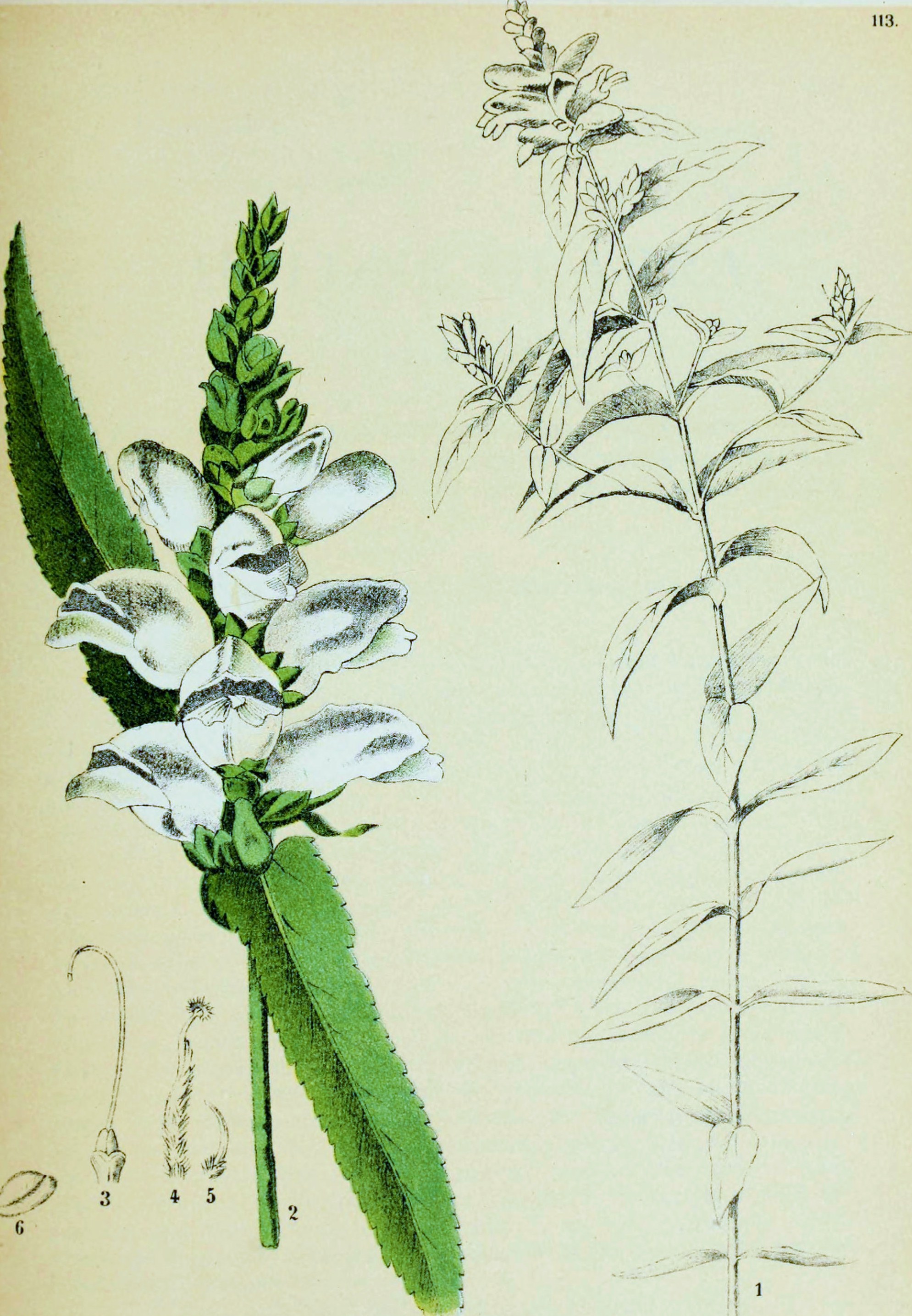
Chelone glabra (L.)
 Synonyms: turtlebloom, turtle head, bitter
herb, snake head, shellflower, saltrheum weed, white chelone, hummingbird tree
Synonyms: turtlebloom, turtle head, bitter
herb, snake head, shellflower, saltrheum weed, white chelone, hummingbird tree
Order: Scrophulariaceae
Description: Chelone is an erect perennial herb. The leaves are smooth, opposite and oblong in shape, paler on the underside with raised veins. The stem supports dense terminal spikes of white, pink or purple slipper-like flowers. It inhabits wet and swampy ground through eastern North America.
Parts used: Aerial parts
Collection: During the flowering and fruiting period between July and September.
Constituents: not established, but include bitter principles and resin
Actions: Gentle cholagogue, antemetic, antidepressant, laxative, digestive stimulant, tonic, anthelmintic
Indications: Cholecystitis, anorexia, intestinal colic. Specifically indicated in gallstones with jaundice.
Therapeutics and Pharmacology: Chelone is an excellent liver remedy and acts as a tonic on the whole digestive and absorptive system. It stimulates the secretion of digestive juices and is used to treat gallstones, inflammation of the gallbladder and in jaundice. It stimulates the appetite, eases colic, dyspepsia and biliousness and is helpful in debility. It is particularly suitable for young and elderly patients. It rids the body of round and thread worms, having a gentle action particularly appropriate for treating children. It is a mild laxative. Externally, the ointment has been used on inflamed breasts, painful ulcers, eczema and haemorrhoids.
Combinations: Combines with Juglans for constipation and with Gentiana and Hydrastis for hepatic jaundice.
Preparation and Dosage: (thrice daily)
Regulatory status GSL
Dried herb: 1-2g or by infusion
Liquid Extract: 1:1 in 25% alcohol, 2-4ml
Tincture: 1:10 in 45% alcohol, 1-2ml
Additional Comments: The name of the genus Chelone comes from the Greek word for tortoise, from the resemblance of the corolla to a tortoise-head. Balmony was a favoured plant among the Native Americans as a purgative, laxative and tonic.
Bibliography
BHMA 1983 British Herbal Pharmacopoeia, BHMA, Bournemouth.
Grieve, M. 1931 A Modern Herbal, (ed. C.F. Leyel 1985), London.
Hoffmann, D. 1990 The New Holistic Herbal, Second Edition, Element, Shaftesbury.
Lust, J. 1990 The Herb Book, Bantam, London.
Mabey, R. (ed.) 1991 The Complete New Herbal, Penguin, London.
Mills, S.Y. 1993 The A-Z of Modern Herbalism, Diamond Books, London.
Wren, R.C. 1988 Potter's New Cyclopaedia of Botanical Drugs and Preparations, C.W.Daniel, Saffron Walden.










